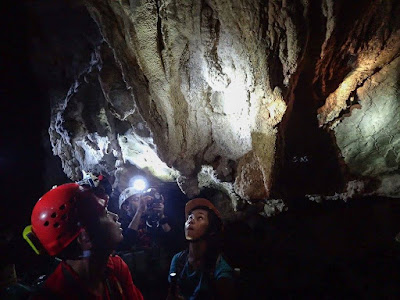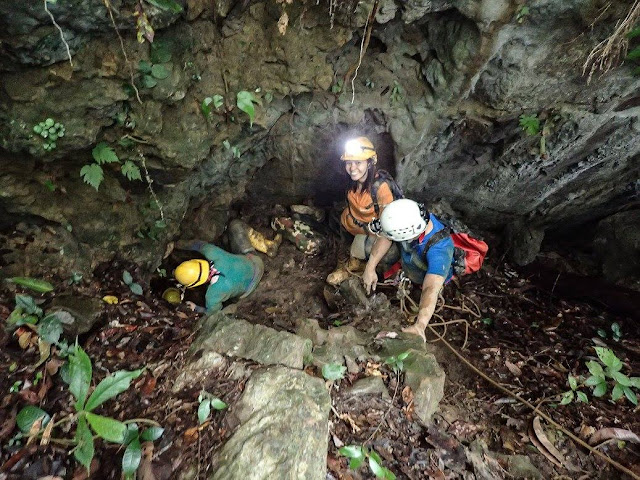Nepenthes, or tropical pitcher plants, are a genus of carnivorous plants well known for their intricate and beautiful pitcher-shaped leaves that trap and digest insects. The genus is comprised of approximately 150 species, most of which are endemic to the Old World Tropics. The greatest diversity of Nepenthes are found in Borneo, Sumatra and the Philippines. Plants within the Nepenthes genus grow within a broad altitude range from sea level to 3,400 meters (11,100 feet). But some species are restricted to narrower ranges, and may face extinction in a warming world.
At 140 million years old, the Borneo rainforest is one of the oldest rainforests in the world. Approximately 15,000 species of flowering plants and 3,000 tree species comingle and compete for space in this dense plant community. The Borneo rainforest is also home to various indigenous peoples, a treasure trove of medicinal plants, and a rich collection of carnivorous plants. Carnivorous plants can be found throughout Borneo but one especially accessible area to visit tropical pitcher plants is in Bako National Park.
Bako National Park is the oldest National Park in the Sarawak region of Malaysian Borneo. The park is close enough to the city of Sarawak to visit in one day. Once in the park, hikers can explore the intertidal zone of the South China Sea and trek into steep regions of montane forest in the same day. Wildlife is abundant. One particular trail, the Lintang Trail, leads hikers along mangrove boardwalks near the Park headquarters and up a steep sandstone escarpment. Hikers eventually reach a plateau area that is part keranga, or dry heath forest, and part bare sandstone rock. It doesn’t take a well-trained botanist to spot abundant tropical pitcher plants while hiking around the Lintang trail. Nepenthes are everywhere along the trail and appear quite healthy. Multiple Nepenthes species thrive in Bako National Park, but one species, Raffles’ pitcher-plant (N. rafflesiana), is particularly well represented along this trail.

Raffles’ pitcher-plants grow happily in various microenvironments: peat swamp forests, heath forests, cliffsides and keranga forest. Furthermore, this species lives within a broad altitude range, and is found at sea level all the way up to 1,500 meters (5,000 feet). Thanks in part to its flexible altitude range, this Nepenthes species enjoys healthy population numbers and is currently listed as a Least Concern species on the IUCN list of endangered species.
Now, let’s compare this scenario with another tropical pitcher plant living in Borneo, the large-leaved pitcher-plant, (Nepenthes macrophylla). Unlike Raffle’s pitcher plant, this species can tolerate only a narrow range in altitude, growing exclusively on mossy ridges along Mount Trusmadi between 2,000 and 2,600 meters (6,500 and 8,200 feet) (Clarke, 1997.) Mount Trusmadi is located in Sabah, the eastern region of Borneo. The peak of Mount Trusmadi sits at 2642 meters (8667 feet), so the narrow altitude range of the large-leaved pitcher-plant extends almost up to the summit. Due in part to this restrictive geographic range, the population of this Nepenthes species is in a precarious situation, and is currently listed as Critically Endangered on the IUCN list.


Okay, so what are the most probable fates of these two different Nepenthes species in the next 100 years as the world warms? Would populations of large-leaved and Raffles’ pitcher-plants be impacted by the predicted rise in global temperatures?
In the next century, our planet is predicted to experience an increase in temperature between 1 and 5 degrees Celsius (2 to 10 degrees Fahrenheit). Most living creatures will be challenged in some manner by this shift. Plants, unlike animals, lead a largely sedentary lifestyle. On a multi-generational timeframe, they can disperse seeds directionally along an environmental gradient, but, unlike birds or mammals, they don’t have the luxury of quickly moving to cooler microclimates within one lifespan. In this sense, the breadth of a plant’s altitudinal range is a determinant of how well a plant can cope with predicted climate change scenarios.
As anyone who has climbed a mountain can attest, temperatures decrease as you gain in elevation. In fact, temperatures drop approximately 3.5 degrees Fahrenheit for every 1,000 feet in elevation. If a plant can tolerate a wide range in altitude, then throughout the next century of predicted climate increase, that species has the luxury of aggregating towards the higher and cooler end of its altitude range.
To that point, one can imagine that a Nepenthes species such as Raffles’ pitcher-plant, with its broad altitude range, would be capable of adapting to climate change. The species will slowly aggregate in the higher and cooler parts of its range and likely survive. However, for the large-leaved pitcher-plant this transition is less likely. As temperatures increase, this species would shift to the highest portion of its narrow altitude range only to reach the very tip of the Mount Trusmadi summit. In an attempt to find cooler air, the large-leaved pitcher-plant would eventually reach a proverbial brick wall. With no cooler land to colonize, the species would perish if its last mountaintop refuge heats up more than it can stand.
This type of theoretical extinction event can be illustrated with a tool called environmental niche modeling (ENM). An environmental niche model generates a prediction for the future distribution of a species. These models use computer-generated algorithms to predict future shifts in the geographic distributions of wildlife. Scientists are now utilizing these models to learn how an increase in global temperatures may affect the population of one particular species. A collaboration between Scottish and Malaysian biologists has yielded an environmental niche model that examines the predicted fates of four plant species currently growing on Mount Trusmadi. The authors entered sampling datasets for two Nepenthes species (N. macrophylla and N. Iowii) and two other plant species (Hopea montana and Shorea monticola). The model then used two separate climate change models to examine the future population health of these species in 2050.


Of the four species analyzed, the large-leaved pitcher-plant is predicted to be the most severely affected by a future rise in global temperatures. In fact, this ENM estimates that this Nepenthes species will become extinct by 2050. The authors cite the species’ narrow altitude range as the main driver of this predicted decline.
“In the case of Nepenthes macrophylla, the restriction of this species to the summit makes this species particularly susceptible to the impacts of climate change,” they write in their 2011 study.
Now, admittedly, these ECNs are a blunt tool for predicting the future health of a population. It is also possible that in 50 or 100 years, a plant could evolve a greater tolerance for broader altitude ranges and/or higher temperatures. As the world heats up, a Nepenthes species may adapt via incremental changes in physiology and behavior. In theory, this would decrease the chance of an extinction event.
But ECNs do provide some indication of the likely trajectory of a species in the face of climate change. And as it stands now, the future does not look good for the large-leaved pitcher-plant.
Kevin Curran is an adjunct professor and researcher at the University of San Diego. The views expressed are his own.
Citations:
- Adam, J. H., Wilcock, C. C., & Swaine, M. D. (1992). The ecology and distribution of Bornean Nepenthes. J. Trop. Forest Sci, 5(1), 13-25.
- Clarke, C. (1997). Nepenthes of Borneo. Kota Kinabalu, Sabah: Natural History Publications (Borneo) xi, 207p-col. illus.. ISBN, 1248185562.
- MacKinnon, K. (1996). The ecology of Kalimantan (Vol. 3). Oxford University Press.
- Maycock, C. R., Majapun, R., Khoo, E., Pereira, J., Sugau, J., & Burslem, D. F. R. P. (2011). The potential impacts of climate change on the distribution of Nepenthes and dipterocarps of the Trus Madi Forest Reserve. Conservation of biodiversity in Trus Madi Forest Reserve.

















































